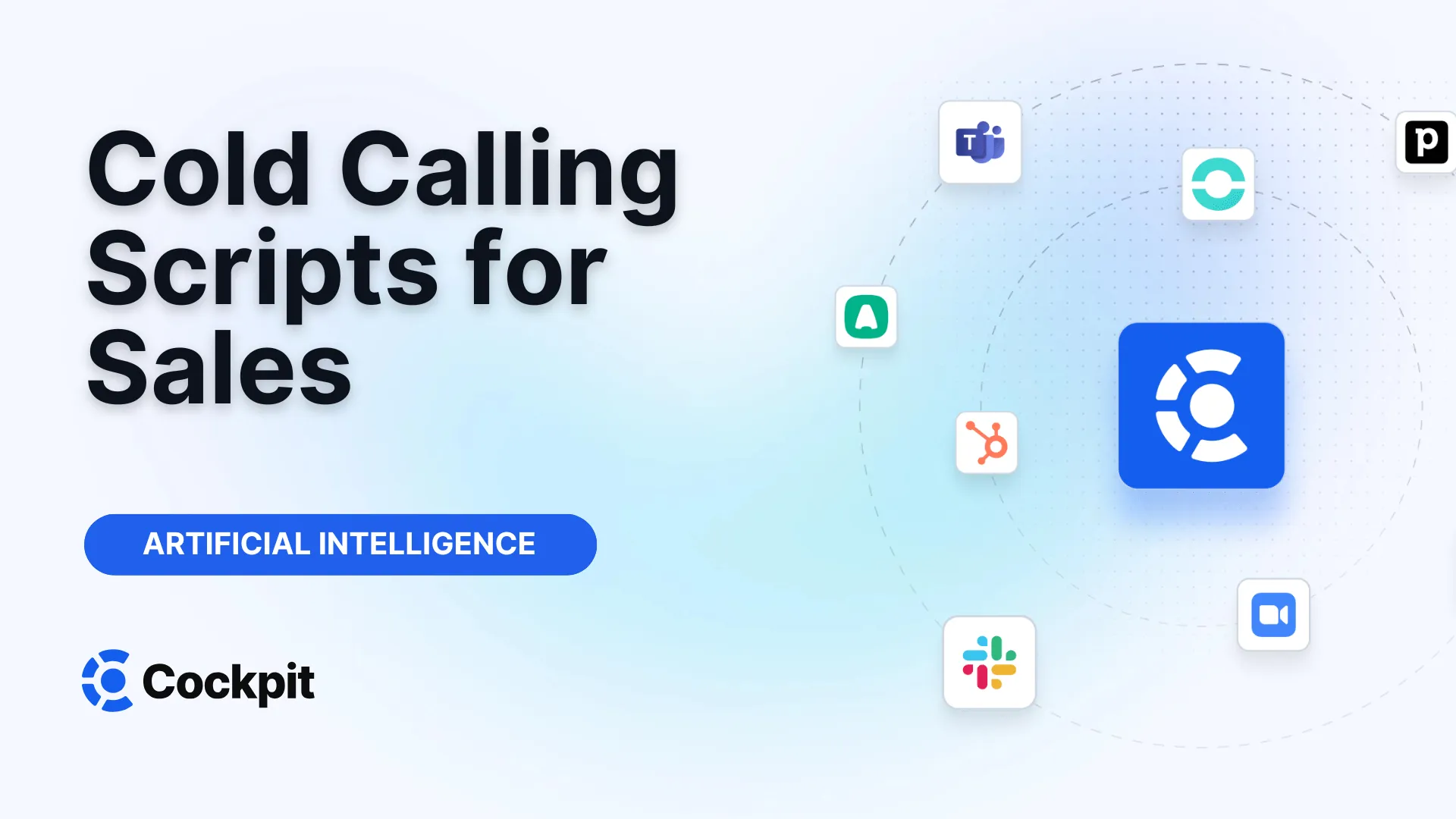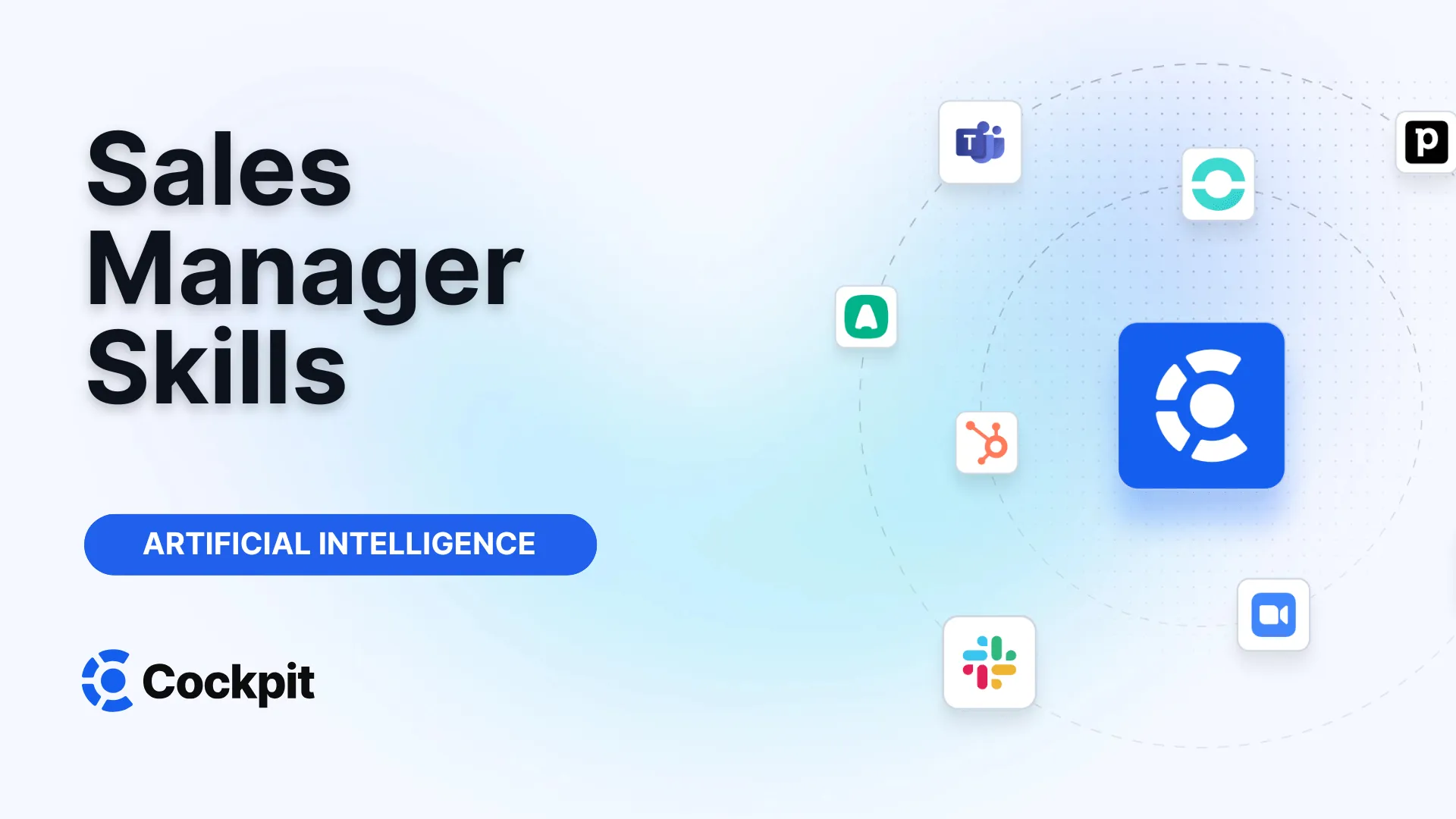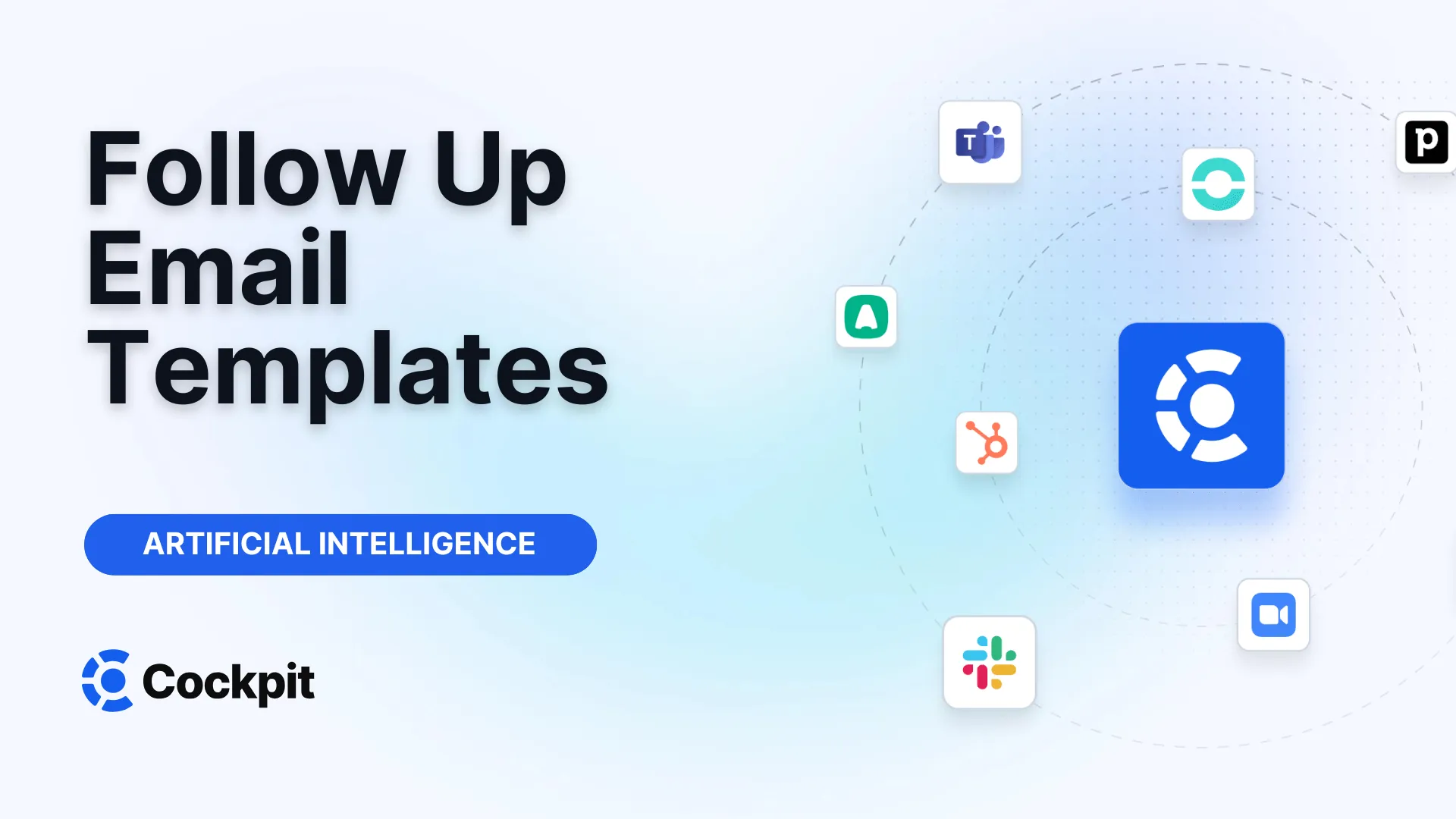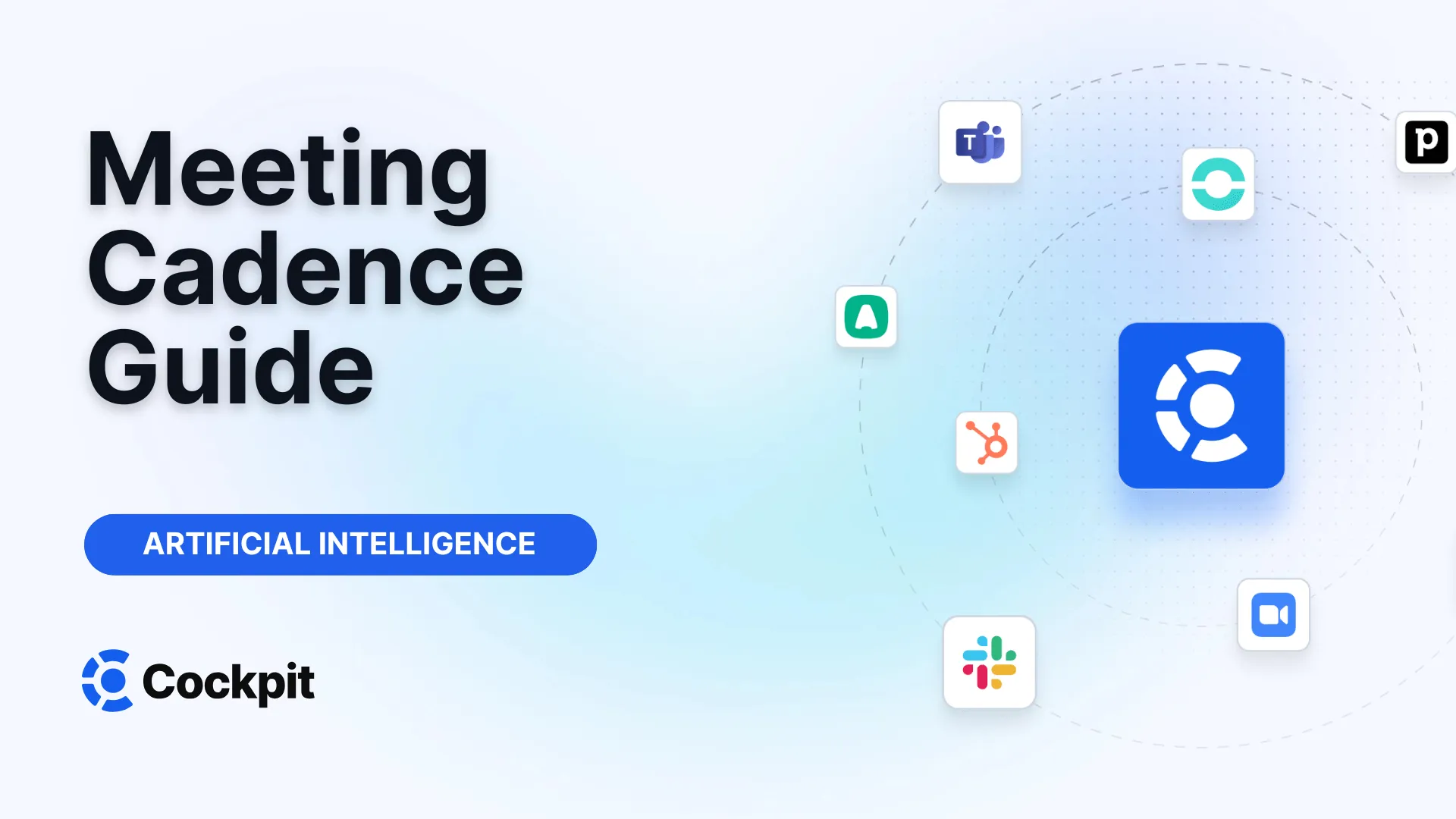Optimize your sales force in just a few clicks

Thousands of sales teams boost their performance with Cockpit. Why shouldn't you?
Explore CockpitSummary
Does cold calling feel like an insurmountable mountain to you? Do you sometimes dread picking up the phone, fearing silence, rejection, or the infamous "I'm not interested"? How can you turn a cold conversation into a business opportunity in just a few minutes? The key is not total improvisation, but smart preparation that leaves room for authenticity.
A well-designed sales call script is not a text to recite word for word, but a roadmap that gives you confidence, structures your speech, and prepares you for all eventualities. It allows you to stay focused on your main objective: creating value for your interlocutor and ultimately for your business.
What Makes a Good Sales Call Script?
Before diving into templates, it is crucial to understand the pillars of an effective sales script. The success of a call does not rely on chance, but on a precise alchemy of preparation, listening, and relevance. An efficient phone pitch must first inspire trust and demonstrate immediate added value while following a clear path toward conversion.
A fundamental goal of your call is to sell. However, if you approach a complete stranger with that sole mindset, failure is almost certain. Your prospect owes you nothing. Their time is precious. A good script always highlights value for the potential client. Your mission is to reassure them, show empathy for their challenges, and prove that the value you offer far exceeds the cost of your products or services. Every sentence in your pitch must answer the prospect's silent question: "What's in it for me?"
Research: Your Best Asset
A generic script delivers generic results. Personalization is key. Before each call, take the time to do some research:
- In B2B: Study the company's website, its business model, and recent news. Check your contact's LinkedIn profile to grasp their responsibilities, interests, and communication style.
- In B2C: If individual information is scarce, build personas based on the demographics of your contact list. Adapt your tone and arguments according to likely challenges related to age, income, or your prospect's situation.
Anticipate and Handle Objections
When you unexpectedly ask someone for money, expect resistance—it is natural. List the most common objections: "Why is your service so expensive?", "Will this work for my specific situation?", "How do I know this isn’t a scam?". Prepare clear, concise, benefit-focused responses.
A good salesperson does not sell a product; they sell a solution to a problem. Customers do not care about your brand; they care about what your brand can do for them. Your script must reflect this reality at every stage.
The Essential Formula for a Winning Call
To ensure you don’t forget any crucial element, follow a proven structure. This roadmap will guide you throughout the conversation while allowing the flexibility to adapt.
- Concise Introduction: Greet your contact professionally and warmly. Briefly introduce yourself: your name, your company, and the reason for your call.
- Availability Check: Show that you respect their time. A simple phrase like “Do you have two minutes for me to explain why I am reaching out?” minimizes perceived commitment.
- Clear Value Proposition: Quickly explain what your company does, emphasizing the concrete problems it solves. This is the hook that must capture attention.
- Exploring Pain Points: If your research is good, you already have an idea of their challenges. Validate your assumptions with open questions: “What are your biggest challenges today regarding [topic]?”
- Personalized Pitch: Now that you understand their problems and they understand what you offer, present your solution as the logical answer to their needs. Be ready to handle objections without pressure.
- Call to Action (CTA): Always finish the call with a clear next step. It could be scheduling a demo, sending a proposal, or setting up a next meeting.
Expert Tips
A script is not a recital. It is a guide. The best salespeople use it as a framework to ensure they cover all important points, but they know how to detach from it for a natural conversation. Authenticity and active listening will always beat a robotic monologue.
10 Sales Call Script Templates for Every Situation
Armed with these fundamental principles, here are ready-to-use templates you can adapt to different stages of your sales cycle.
1. First Contact Script (Prospecting)
When to use: For your very first call with a new prospect.
| Step | Script |
|---|---|
| Introduction | "Hello [Prospect’s Name], I am [Your Name] from [Your Company]. We help companies in [their industry] to [solve a key problem, e.g., optimize lead generation]. I noticed on your website that [mention a specific, personalized point], and I think I have an idea to improve that." |
| Availability | "Do you have 5 minutes to discuss this?" |
| Pitch & Value | (If yes) "Great. We've observed that [mention 1 or 2 concrete solution examples]. Our approach generally achieves [quantified result, e.g., +20% conversions] by focusing on [your method]." |
| CTA | "I know this is an important decision. I can send you a summary email with some numbers. You'll find a link inside to schedule a short 15-minute demo if interested. What is the best email to send it to?" |
Why it works: This script shows you have done your homework. It respects the prospect’s time, goes straight to the point, and does not pressure for an immediate decision, reducing friction and increasing chances for a next step.
2. "Choose Your Own Adventure" Script
When to use: To engage the prospect early and let them guide the conversation toward what interests them most.
Script:
"Hello, this is [Your Name]. We develop solutions to help sales directors on two main fronts: either improving recruitment of talent or optimizing the performance of their existing team through automation. Which of these two topics is most relevant for you right now?"
(Prospect chooses an option)
"Perfect. Before telling you more, may I ask two or three questions to better understand your context? ..."
Why it works: This approach is smart because it earns an early “micro-yes”. By giving a choice, you make the prospect an active participant. They feel heard and become more invested in the conversation.
3. Referral Script (The Most Powerful)
When to use: To turn a cold call into a warm call by using the name of a mutual connection.
Script:
"Hello [Prospect’s Name],
[Mutual Connection’s Name] and I are currently achieving excellent results with [Their Company]. When discussing who else might benefit, your name immediately came up.
Congratulations on [mention a recent success: new funding, product launch…]. What you are doing at [Their Company] is truly impressive!
I would like to show you in a few minutes how we helped [Mutual Connection’s Name] achieve [key result] and how we could do the same for you. Would that interest you?"
Why it works: Social proof is an extremely powerful psychological lever. Simply mentioning a mutual acquaintance breaks the ice and creates immediate trust.
4. Gatekeeper Script
When to use: To get past the assistant or receptionist who filters calls.
Script:
"Hello, I’m [Your Name]. I hope you can help me. I would like to speak with [Decision Maker’s Name] regarding the optimization of their sales processes. We help companies like yours reduce administrative time by 5 to 10 hours per salesperson each week. What is the best way to present this information to them?"
Why it works: Instead of treating the gatekeeper as an obstacle, you treat them as an ally. You provide a compelling reason to let you through (a clear, quantifiable benefit for their company) and ask their advice, which flatters them.
5. Effective Voicemail Script
When to use: When you reach voicemail. Never hang up without leaving a message!
Script:
"Hello [Prospect’s Name], this is [Your Name] from [Your Company].
I’m calling because I have a specific idea to help you [solve a problem, e.g., speed up onboarding of new salespeople]. I’d like to see if a brief discussion about this would be relevant for you.
You can reach me at [Your Number].
Again, this is [Your Name] at [Your Number]. Thank you and have a great day, [Prospect’s Name]."
Why it works: It is short, direct, and centered on a potential benefit. The message is intriguing without being too commercial. Repeating your name and number makes contacting you easier.
6. Follow-Up Script After "Send Me an Email"
When to use: To follow up with a prospect who used this classic objection to cut the call short.
Script:
"Hello [Prospect’s Name], this is [Your Name] from [Your Company]. We spoke last week, and as agreed, I sent you an email. Have you had 30 seconds to take a look?
(Pause)
To make sure the information I sent is as relevant as possible, could you please tell me what your main challenge is today regarding [your expertise domain]?"
Why it works: You show seriousness by following up. Instead of asking “Did you read my email?” which invites a “no”, you minimize the question (“30 seconds”). Then you immediately pivot to an open question to restart the conversation around their needs.
7. Special Offer or Promotional Script
When to use: To inform existing customers or leads about a limited-time offer.
Script:
"Hello [Customer’s Name], this is [Your Name] from [Your Company]. We talked on [date] about [product]. I’m calling today in advance because we are launching our [offer name] campaign, and I wanted you to be informed before anyone else. You can benefit from [offer advantage]. Do you have 2 minutes for me to explain?"
Why it works: This script plays on exclusivity (“before anyone else”) and urgency (limited offer). For an existing client, it is a valued sign of attention. For a lead, it is an excellent reason to re-engage.
8. Appointment Scheduling Script After Signup
When to use: When a prospect has expressed interest (e.g., downloaded a whitepaper, requested a demo).
Script:
"Hello [Prospect’s Name], I’m [Your Name] from [Your Company]. I saw you requested a demo of our solution, and I just wanted to reach out to prepare our conversation. To make sure I show you the most useful features, what are 2 or 3 goals you hope to achieve with a tool like ours?"
Why it works: The call is not “to sell” but “to help.” You position yourself as an advisor seeking to optimize the future meeting's time. This builds a collaborative atmosphere.
9. Post-Purchase Check-In Script
When to use: A few days or weeks after a client starts using your product/service.
Script:
"Hello [Customer’s Name], this is [Your Name]. I’m not bothering you to sell anything today! I just wanted to check in and make sure your experience with [your product] is going well. Have you had a chance to try it? How is it going so far?"
Why it works: This call is 100% customer-centered. It shows you care about their satisfaction beyond the transaction. It is an excellent way to foster loyalty, diffuse potential problems, and collect valuable testimonials.
10. Contract Renewal Script
When to use: To approach a client whose commitment is coming to an end.
Script:
"Hello [Customer’s Name], this is [Your Name] from [Your Company]. I see our contract expires next month. First, I’d like to know, on a scale from 1 to 10, how satisfied are you with our services today?"
(If the score is good) "Fantastic! I’m glad to hear that. If you want to renew, we can do so now to guarantee the same terms."
(If the score is poor) "Thank you for your honesty. That’s valuable. Could you tell me more about what we could improve to reach a 10?"
Why it works: You open the discussion on client satisfaction, not money. It shows you are ready to listen and improve, which is the best foundation to negotiate renewal, even if there is dissatisfaction.
How to Handle Common Objections Like a Pro
Even the best script will face objections. Do not see them as failures but as opportunities to clarify your value.
- "I don’t have time": This is often a polite way of saying “you’re not my priority”.
- Response: "I completely understand. That’s exactly why I’m calling: to save you time. Give me 60 seconds. If at the end of this minute you’re not convinced, I’ll hang up. Does that work for you?"
- "Send me an email": The classic objection to get rid of you.
- Response: "With pleasure. To make sure I send you the most relevant information and not waste your time, what should I emphasize in this email? What is the number one problem you want to solve regarding [your domain]?"
- "I’m not interested": A direct objection that can be unsettling.
- Response: "I understand your cold reaction. Most of our best clients told me the same at the first call. May I just ask: if I could show you a way to [key benefit with numbers], would that at least pique your curiosity?"
Note
The objection "Send me an email" is not an invitation to send your sales brochure. It is a test. Your ability to bounce back with a relevant qualifying question about the email content is what separates amateurs from professionals.
Beyond the Script: AI to Multiply Your Performance
A script is a solid base, but in the heat of action, it is hard to keep track, take notes, listen actively, and think of the next question. That’s where productivity tools for sales, like ours, make a difference.
Imagine being able to focus 100% on the conversation without worrying about note-taking. Our platform records, transcribes, and automatically summarizes each call. No more stress about missing crucial information. You can stay fully engaged, listen to nuances in your prospect’s voice, and adapt your speech in real-time.
Moreover, our AI Playbook goes even further. It analyzes your calls and objectively evaluates if your sales methodology has been correctly applied.
- Did you ask the right discovery questions?
- Did you clearly present the value proposition?
- How did you manage objections?
This tool becomes your personal coach, providing concrete insights to continuously improve your pitches. It also helps managers accelerate onboarding of new team members by giving access to the team's best practices. Finally, all key information—call summary, next steps, custom fields—is automatically synchronized in your CRM. No manual entry, an always up-to-date CRM, and reliable data for the entire team.
Caution
The greatest danger of a script is sounding robotic. Your personality is your best sales tool. Practice your scripts until they become second nature, then forget them to focus on the human being in front of you. Technology can help by handling repetitive cognitive tasks, freeing your mind for connection and empathy.
In conclusion, mastering the art of cold calling relies on balance: thorough preparation with flexible scripts, sincere listening to your interlocutor's needs, and the use of intelligent tools to help you be the best version of yourself at every call. The templates and advice in this article are your starting point. Adapt them, test them, and above all, practice. Every call is an opportunity to learn and improve. With the right approach and tools, every "Hello?" can turn into a lasting and fruitful client relationship.
What Are the Essential Elements of a Successful Sales Call Script?
A successful sales call script rests on six fundamental pillars. First, a brief and personalized introduction that captures attention. Second, a quick availability check to show respect for the interlocutor's time. Third, a clear and impactful value proposition that answers the question, "What's in it for me?". Fourth, open questions to understand the prospect’s pain points. Fifth, a flexible pitch that adapts your solution to their specific needs. Finally, a precise and engaging call to action (CTA) that clearly defines the next step.




